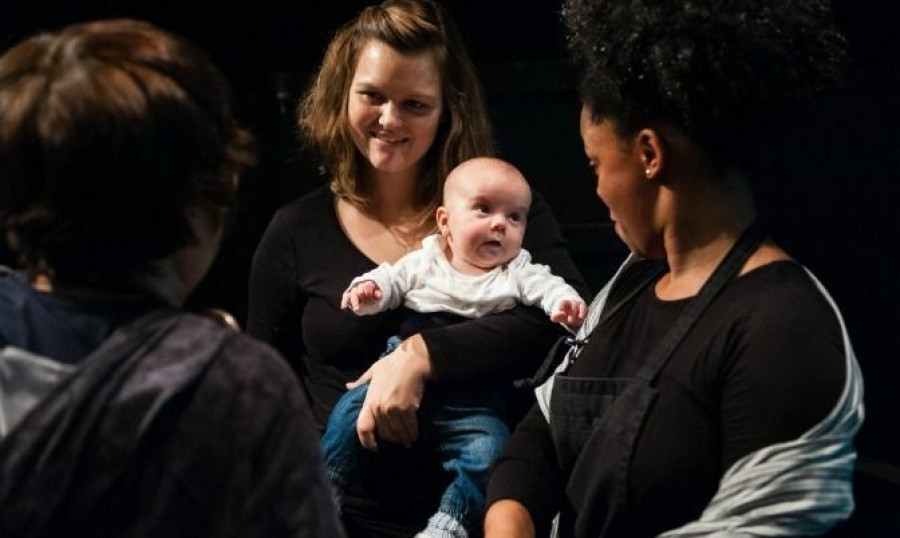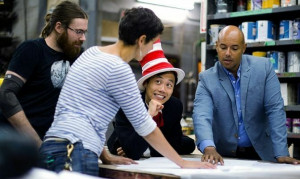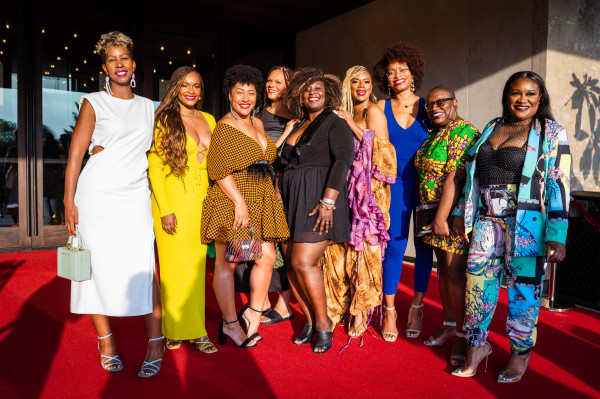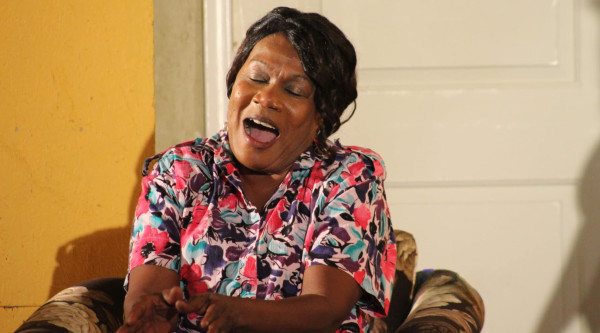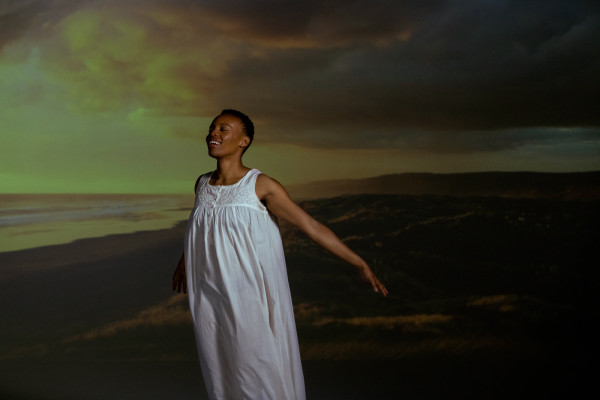The show itself is a collective, collaborative effort by Maja Ardal (performer), Audrey Dwyer (performer), Mary Francis Moore (director), and Julia Tribe (art designer).
Moments before the show, a slew of sock-footed parents chat excitedly on the floor while holding their children. A plethora of crying, crawling, drooling and happy babies are seen moving about and being rocked. There is a sense of excitement in the room for both parent and child alike. And yet, the sounds coming from the ambiance are nothing out of the ordinary.
As the lights dim and the performers take the stage, a slight hush is felt across the floor. Then, as the performers step out in front of the audience, there is a sudden change in the air. The room fills with awe and wonder. Both babies and parents become transfixed.
In a series of cooing noises, sounds of household items, and vibrant colours, performers Audrey Dwyer and Eliza-Jane Scott mesmerize their infant audience. As the babies coo softly back, they are wooed by what they’re seeing.
And despite the performance being in Young People’s Theater, you’d still never expect One Thing Leads To Another to completely steal an infant’s undivided attention.
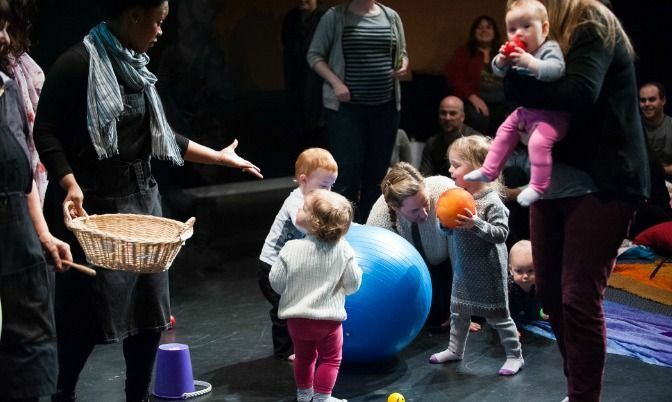
“Babies and children are so receptive. I think way back in the day, people felt like babies wouldn’t be able to ‘get’ certain things and we had to pander down to them and patronize or treat them like they’re not people yet. [As] soon as the play began, [there was] silence. They were just absolutely focused. Babies love to learn and soak up information and this piece specifically is aimed towards 3-month olds to 18-month olds,” says Dwyer.
But what makes the play really stand out is the audience participation. Not only is the performance engaging – it introduces an element of interactivity where parents and children can come onstage and play with the props.
“Babies can [see] how everything works. The magic comes from the commitment of the actors. We’ve learned that babies spend a lot of time looking at the floor, looking at our shoes and looking at our knees because they are so low. We have scarves that are floating into the sky [so] the babes are looking up. We really wanted to engage with them on higher levels,” says Dwyer.
The show’s mandate is to encourage babies to use their senses to create a world through music, enticing visuals, and tactile experiences.
Performance pieces in general are often an ode to raw, human emotion in its purest form. But Dwyer notes that speaking to babies requires a deeper level of authenticity and organicism.
“This work requires so much more honesty and presence because if a baby senses that you’re faking it, they turn away or they might cry. So it really asks [us] to leave behind any kind of stress or worry and be extremely present with them. It requires all of [you]. It requires emotions, spirit, presence, focus and intellect. All of those things are sort of vibing with each other at this time.”
“It’s so rewarding and beautiful to see [parents] surprised at their baby’s focus. Some [babies]stand up and stay standing for 20 minutes. Some of them will hit their parents like, ‘do you see what’s happening?’ It’s really funny because we can see it all. They’ll laugh and look at each other.”
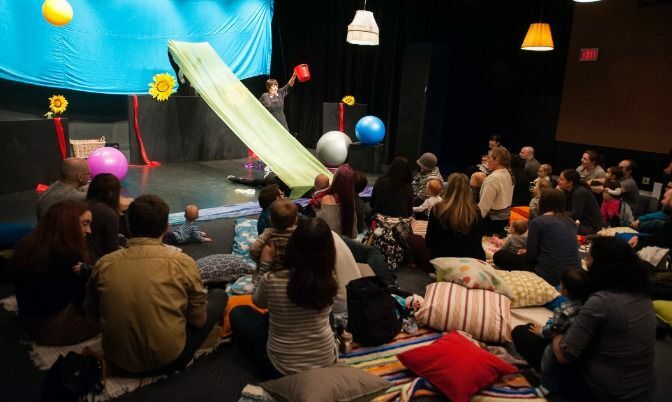
The play itself was created in response to a need for children and babies’ theatre. Creative collaborator Maja Ardal developed the concept, theme, and research when she travelled to Europe and realized this had been executed on stage for years. Bringing it back to Canada, she dropped any complications or “tricks” that the play might have, and decided to show it in its most innocent, pure form.
Dwyer also notes Ardal’s use of child psychology behind the elements in the piece and how they influenced the set design.
“She had a very deep sense of how children and babies respond to colour, size and breadth of things, and all of that went into the piece. [It] started off in darkness and then there were flashes of brightly coloured scarves. Primary colours at first and then the other colours that support the primary colours. All of that was conscious. Even the songs that we sing, they’re three simple notes selected from a piece of classical music that is stimulating. A lot of work went into it.”
“The priority was the connection between us and the kids, but what’s fascinating is that the parents come up with the most amazing stories about what we’re doing. Like the blue silk is the ocean and the balls are the planets and the grey ball is the moon which controls the water…like they come up with these beautiful narratives and we’re like, ‘wow that’s amazing. Okay.’”
One Thing Leads To Another ended its run on October 8th, but with completely sold out shows, we predict it will be back very soon. For more info on the other amazing productions at Young People’s Theatre, check out their website: www.youngpeoplestheatre.ca.
